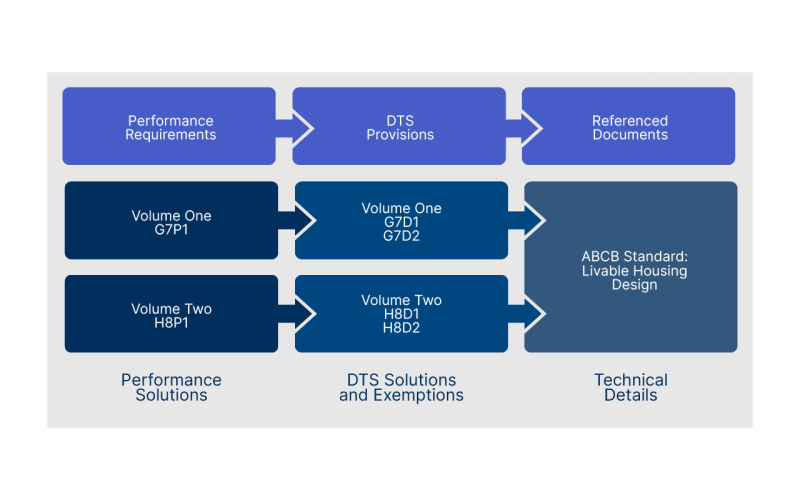NCC 2022 includes new requirements for livable housing design.
What is ‘livable housing design’?
Livable housing design is about changing the way we design homes to make them easier to use and more adaptable to the changing needs of occupants.
In practice, this means reducing steps where possible, more space in the bathroom, wider doorways, and providing for future adaptations such as adding grabrails.
We call these new requirements ‘livable housing design’ because they’re based on the Livable Housing Design Guidelines (silver level), first published by Livable Housing Australia.
Livable housing design represents a significant step-change to how we’ve traditionally designed housing in Australia.
There are many new changes introduced in NCC 2022. To help you understand them and make it as easy as possible to include them in your designs, we’ll be providing guidance material to explain their intent and answer the most commonly asked questions.
What changes are in NCC 2022?
You can find the livable housing design requirements in Volumes One and Two of the NCC.
In Volume One, they’re in the new Part G7. In Volume Two, they’re in Part H8.
These new Parts include:
- A performance-based approach, to provide flexibility and encourage new and innovative ways to meet the requirements.
- Exemptions for situations where full compliance may be impractical or unreasonable.
- Deemed-to-Satisfy (DTS) Provisions that provide a standardised, prescriptive ‘recipe’ to meet the Performance Requirements, suitable for most common designs and construction methods.
The DTS Provisions refer to a new ABCB technical standard, called the ABCB Livable Housing Design Standard. It provides the ‘nuts and bolts’ technical details along with explanatory information to help you understand why they are there and how to follow them correctly.
The ABCB Standard covers:
- Providing step-free access to the home.
- Making doorways and hallways easier to use for people with reduced mobility.
- Providing extra space in the bathroom and toilet.
- Wall reinforcing in the bathroom and toilet, to make it easier to install grabrails if needed in the future.
Given the Standard contains most of the technical DTS Provisions, you may think you don’t need to check the NCC. This isn’t the case. The Standard should not be read in isolation; the diagram below shows how it and the new NCC requirements fit together.

Does this apply to me?
The livable housing design requirements apply to all new Class 1a and Class 2 buildings.
Class 1a buildings are houses, including detached houses, row houses, terraces, townhouses and villa units.
Class 2 buildings are apartment buildings. For Class 2 buildings, the livable housing design requirements will only apply inside the apartments. Section D of NCC Volume One and the Access to Premises Standards will continue to cover the common areas.
If you are extending or renovating an existing home, you’ll need to follow your state/territory requirements for whether or not the works need to comply with the new NCC.
Why are these changes important?
The changes will help increase the stock of Australian housing that is adaptable and better able to meet the needs of older people and people with mobility limitations. This is important to support housing choice, ageing in place and reducing the cost of future adaptations as people’s needs change over time.